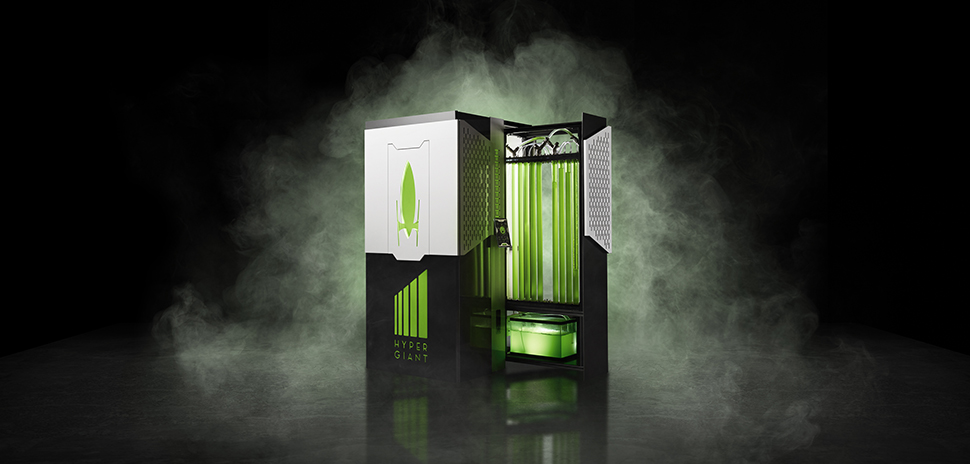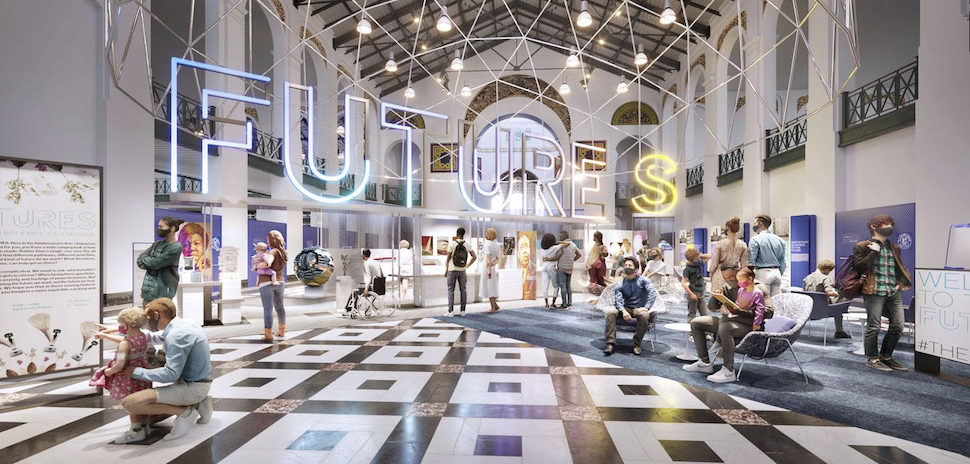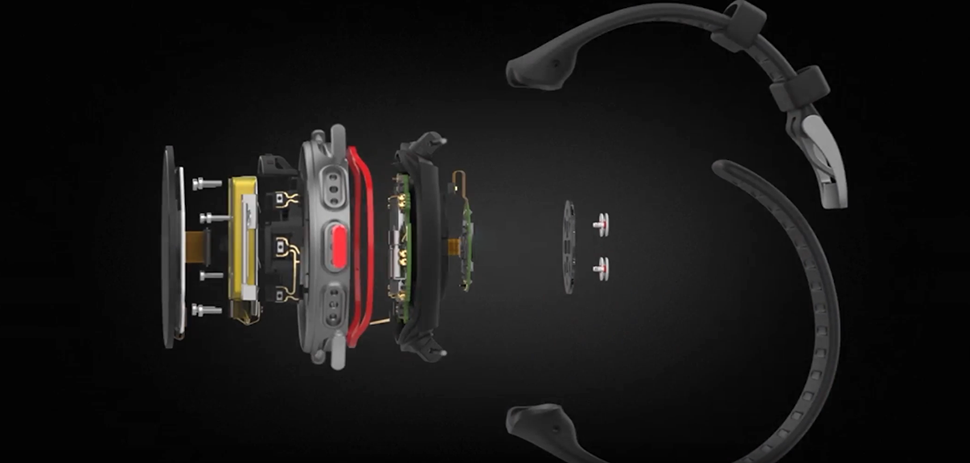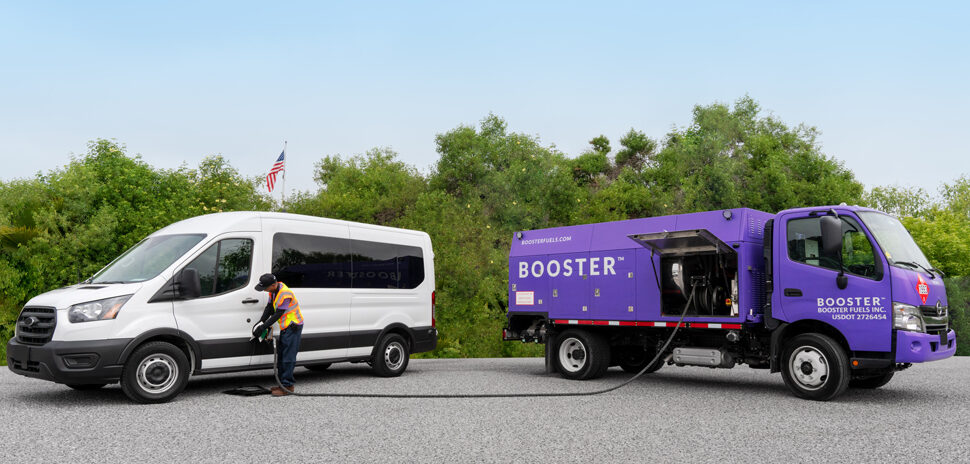Texas-based AI products and services company Hypergiant Industries has launched the Eos Bioreactor, a green energy solution that uses algae to “sequester” carbon from the atmosphere.
Hypergiant wants to use the world’s best technologies to solve the world’s most biggest problems, its CEO and Founder Ben Lamm says. In June, it secured funding from Sumitomo Corporation of Americas and Perot Jain, putting it on track to be one of the fastest tech companies to reach $100 million in realized revenue.
The new funding comes roughly a year after Hypergiant launched out of stealth—a year filled with growing revenue (eight figures in the first 12 months), A-list partnerships (Microsoft, Adobe, SAP, Booz Allen, Nvidia), and launching three separate businesses under the parent company.
Inside Hypergiant’s carbon capture device
Hypergiant aims to improve CO2 consumption with technology. The company said its newly launched prototype bioreactor has the potential to be up to 400x more effective than trees.
The Eos Bioreactor is intended for commercial and personal carbon sequestration, which is the process involved in capturing carbon (CO2) and its storage to mitigate or defer global warming. Just hook it up to the HVAC system and let it go to work. A bioreactor is a device in which a biological reaction or process is carried out, particularly on an industrial scale.
Hypergiant isn’t the first to company to use algae to clean urban air, Fast Company reported. A city in Germany, for example, already is using an algae-covered facade to produce its own power.
Fast Company said that Hypergiant saw CO2 capture as a chance to use machine learning to make more-efficient algae-filled units that could deployed in a wide manner.
Algae, a diverse group of mostly aquatic organisms, already is one of nature’s most efficient machines when it comes to carbon dioxide consumption, considering it has the ability to conduct photosynthesis. Some familiar types of algae are seaweeds, pond scum, and algal blooms in lakes.
Here’s how it works: Algae needs three key elements to grow, carbon dioxide, light, and water. As it consumes CO2, algae produces biomass that can be harvested and processed to create fuel, oils, nutrient-rich high-protein food sources, fertilizers, plastics, cosmetics, and more.
The Eos Bioreactor uses AI to optimize algae growth, which, according to Hypergiant, creates a product that is more sustainable, efficient, manageable, and physically smaller than other bioreactor prototypes.
Machine intelligence could also help improve the efficiency of the reactor design and autonomous health monitoring could create a machine that is aware of (and can react to) its surroundings. By constantly monitoring and managing factors such as the amount and type of light, available CO2, temperature, PH, bio density, and harvest cycles, the perfect environment for carbon sequestration can be created.
Lamm says the device is one of the company’s initial efforts focused on fixing the planet’s environmental problems.
“Excess carbon in our atmosphere is driving a number of massive catastrophes for our planet and pushing us to get off planet and colonize space,” he says. “I want humanity to colonize space because I want to explore the cosmos to better understand our place within it. I don’t want us to colonize space because we are running away from our home planet.”
READ NEXT ‘Our Best Product Yet’: Hypergiant Has Futuristic Helmet in the Works
The Eos Bioreactor is a controlled closed system model in which all parts of the growth process are tightly controlled and optimized with machine intelligence to maximize CO2 consumption, the company said.
Hypergiant to connect with the online maker community
Hypergiant said it plans to release blueprints for the Eos Bioreactor to the online maker community later this year with the goal of empowering individuals to create similar, smaller, and modular devices for use in residential units.
The device is a 3-by-3-by-7-foot cube, and is meant to be used in urban environments where it can fit within office buildings. The long-term idea is to have it included as part of larger smart cities program where the “algae byproduct of biodiesel can provide fuel for a variety of other products that promote and improve urban living.”
Also, Hypergiant said it is focused on the use of recycled ocean plastics to create the devices and encourages the community to also do so. More details on the product itself will be announced in 2020.
Hypergiant has myriad projects underway using AI
Last month, Hypergiant announced it is developing a new helmet prototype that features such things as HUD, night vision, infrared imaging, and augmented reality-style overlays. Called Project Orion, the project is expected to have four main functions: classify, detect, mask, and highlight. The company’s goal is for the helmet prototype to provide increased safety for law enforcement, firefighters, and even the military.
In order to provide that safety, the high-tech helmet is expected to offer a 200 degree field of vision, sensors for infrared, night vision, and thermal imaging, informational overlays, hand tracking and gesture inputs, automated data aggregation, and more.
READ NEXT AI Problem Solvers: Hypergiant Industries Teams Up with Global Giant Booz Allen Hamilton
Also, last month, Hypergiant Industries and Booz Allen Hamilton, a management and technology consulting company, announced a partnership to use AI solutions to help fix difficult issues faced by organizations.
Hypergiant Industries serves verticals that include space science and exploration, satellite communications, aviation, defense, healthcare, transportation and municipal infrastructure, food and beverage, retail and more. The company has offices in Dallas, Austin, Houston, Seattle and Washington, D.C.
![]()
Get on the list.
Dallas Innovates, every day.
Sign up to keep your eye on what’s new and next in Dallas-Fort Worth, every day.






























